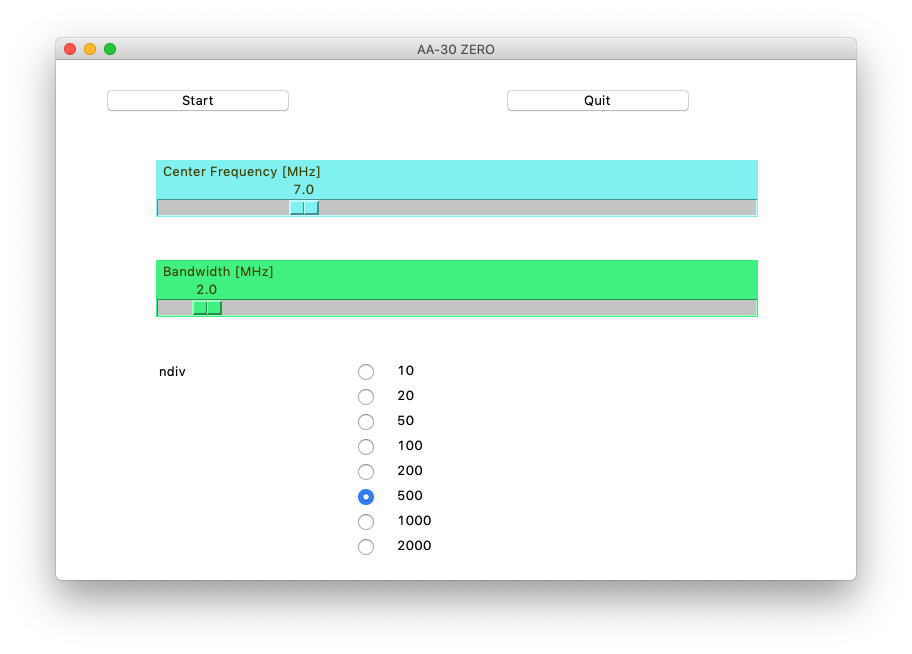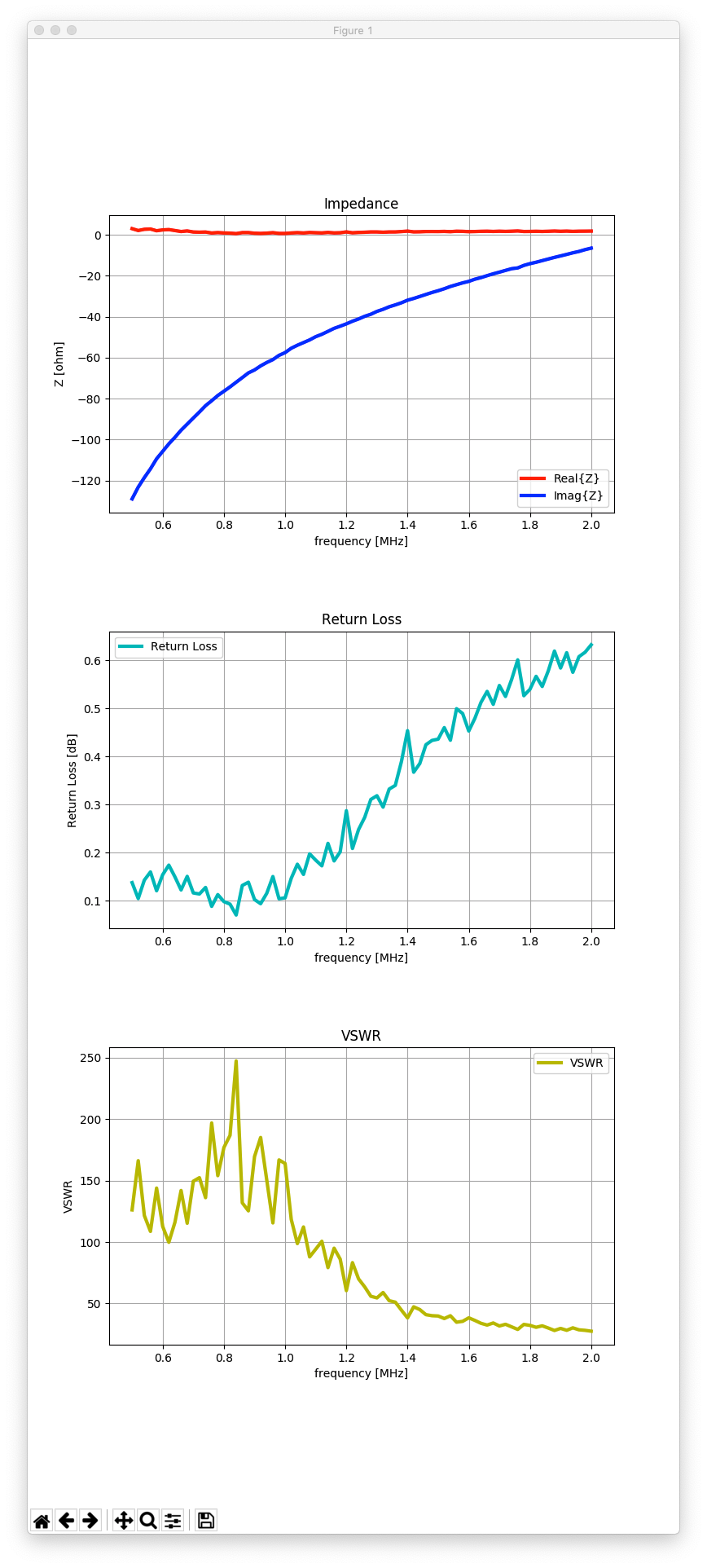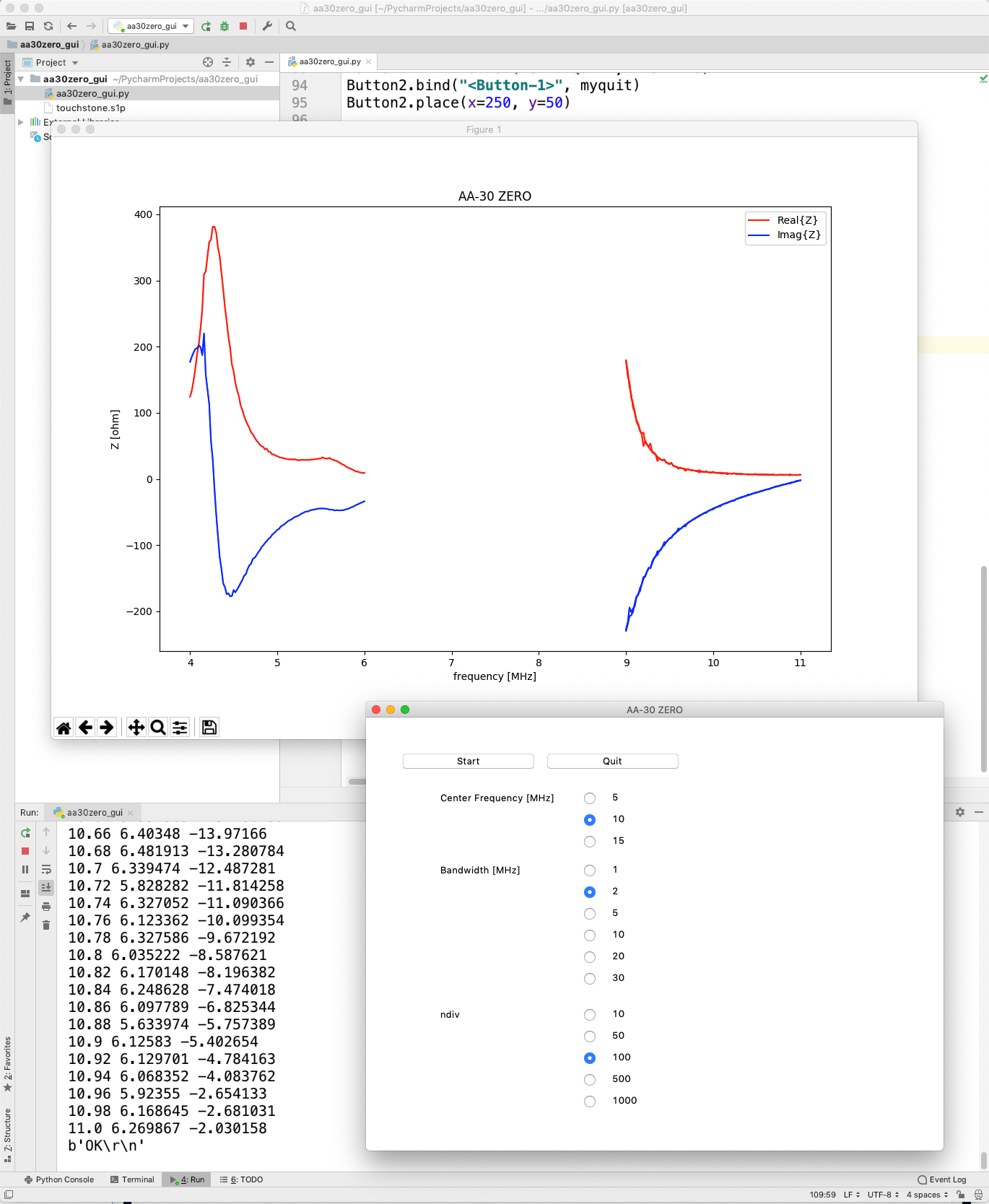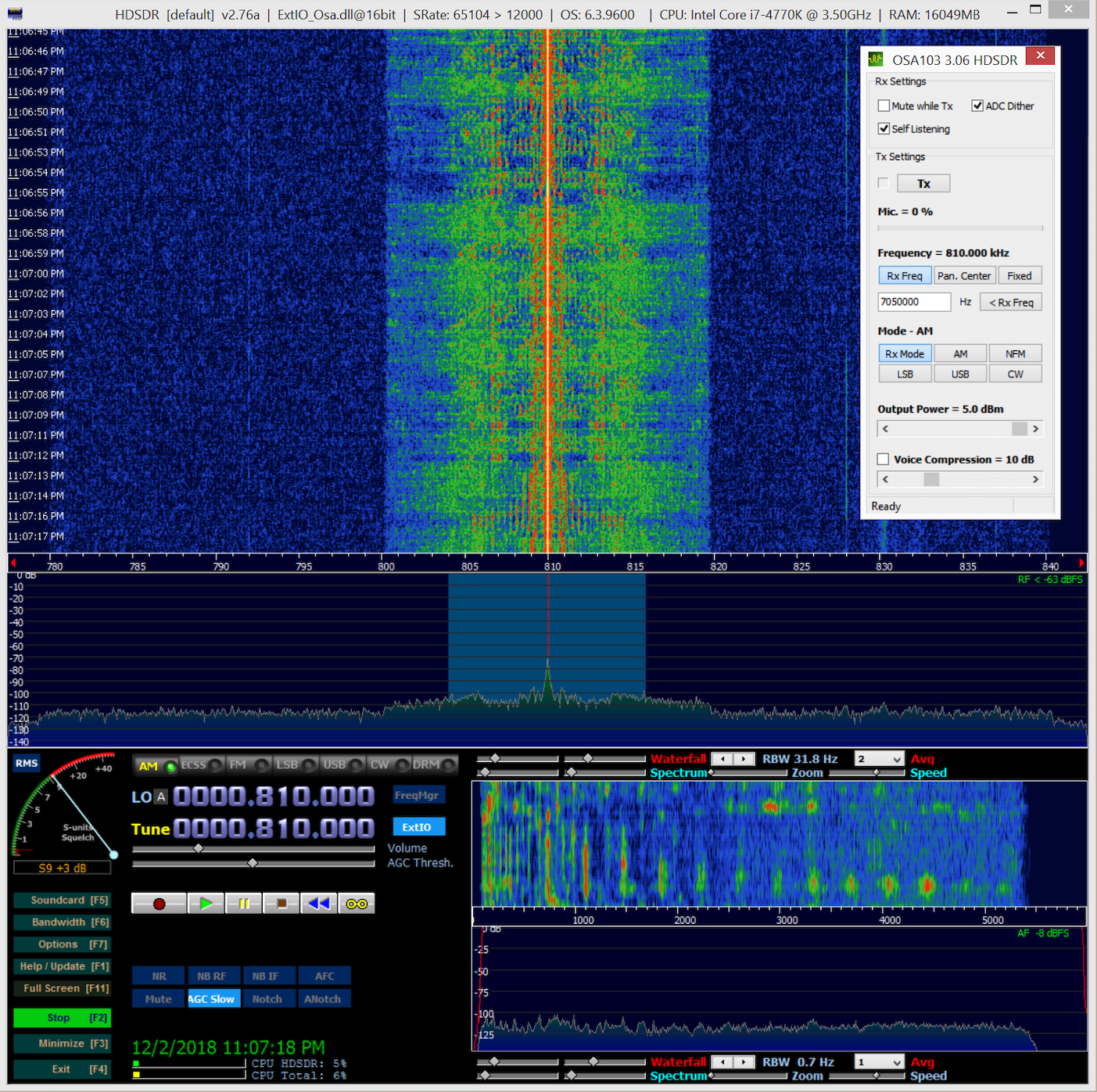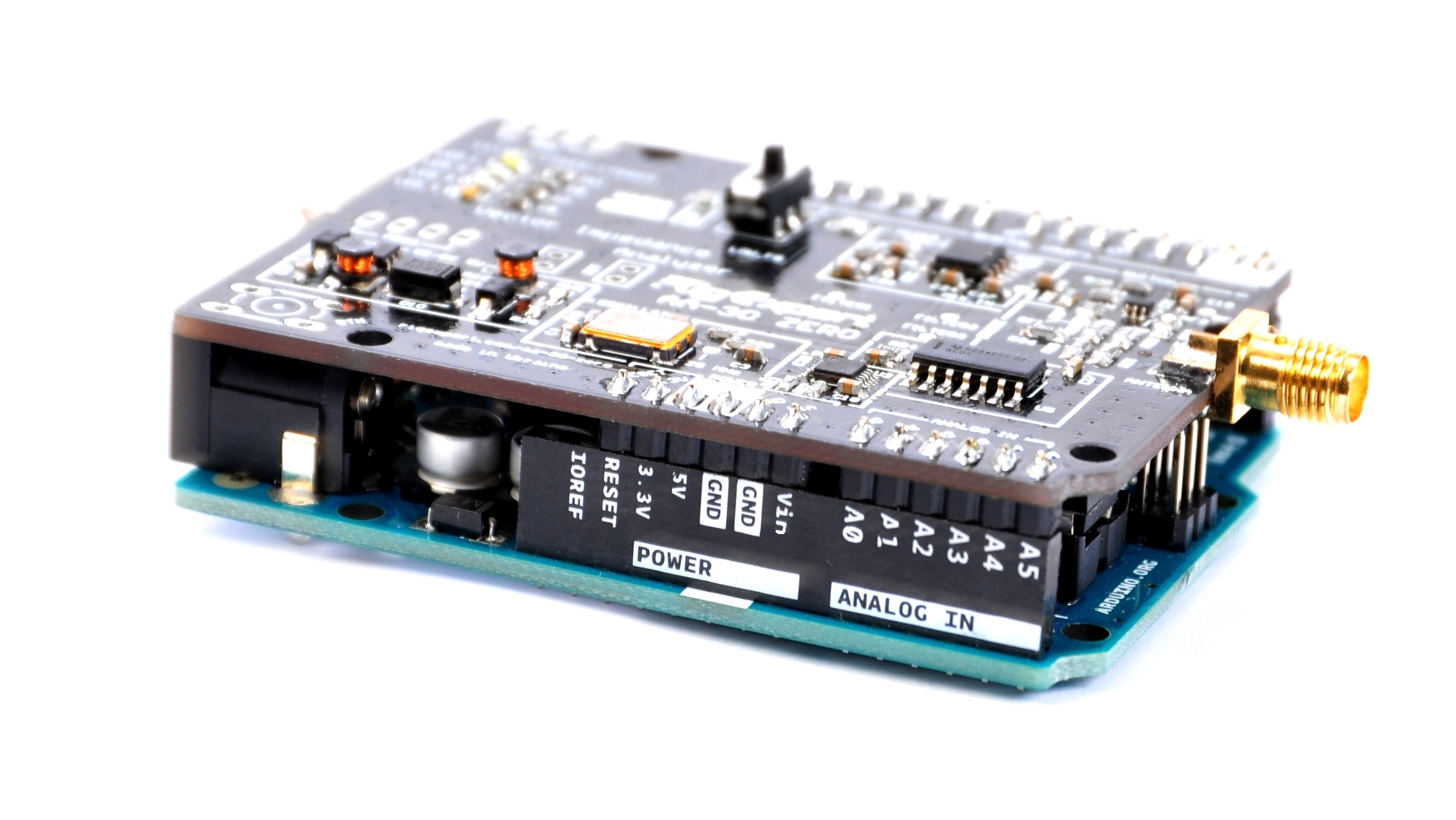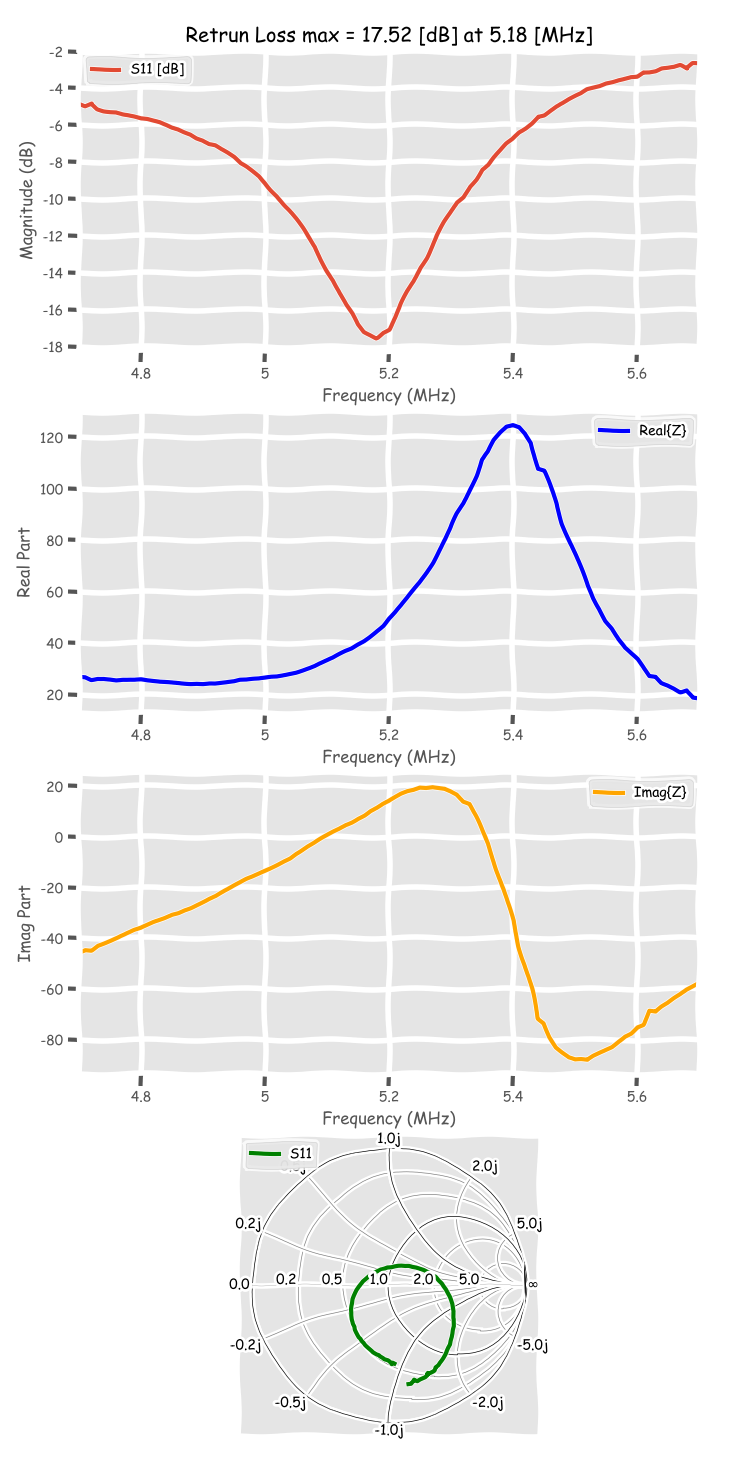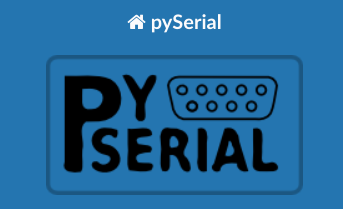The Center Frequency and the Bandwidth are set with sliders.
# aa30zero_gui.py
import serial
import time
import sys
import math
import tkinter as tk
import matplotlib.pyplot as plt
def mystart(event):
print("clicked at", event.x, event.y, ", v = ", v2.get())
print(Slider0.get(), Slider1.get())
measure(Slider0.get(), Slider1.get(), v2.get())
def myquit(event):
print("quit at", event.x, event.y)
sys.exit(0)
def measure(i0, i1, i2):
f = open('touchstone.s1p', 'w')
ser = serial.Serial('/dev/cu.usbmodem14701', 38400, timeout=1)
print(ser.name)
time.sleep(2)
command_0 = b'ver' + b'\x0a'
print(command_0)
ser.write(command_0)
time.sleep(1)
command_1 = b'fq' + str(int(10.0 * i0)).encode('ASCII') + b'00000' + b'\x0a'
print(command_1)
ser.write(command_1)
time.sleep(1)
command_2 = b'sw' + str(int(10.0 * i1)).encode('ASCII') + b'00000' + b'\x0a'
print(command_2)
ser.write(command_2)
for i in range(3):
line = ser.readline()
print(line)
time.sleep(1)
ser.write(b'frx' + str(ndiv_list[i2]).encode('ASCII') + b'\x0a')
f.write('# MHz S RI R 50 \n')
z0 = complex(50.0, 0.0)
freq_list = []
zr_list = []
zi_list = []
retloss_list = []
vswr_list = []
for i in range(int(ndiv_list[i2]) + 1):
line = ser.readline().decode(encoding='utf-8').rstrip().split(',')
freq = float(line[0])
if freq < 0.5:
continue
z = complex(float(line[1]), float(line[2]))
rho = (z - z0) / (z + z0)
retloss = -20.0 * math.log10(abs(rho))
vswr = (1 + abs(rho)) / (1 - abs(rho))
freq_list.append(freq)
zr_list.append(z.real)
zi_list.append(z.imag)
retloss_list.append(retloss)
vswr_list.append(vswr)
print(freq, z.real, z.imag, rho, retloss, vswr)
f.write('{0} {1} {2} \n'.format(freq, rho.real, rho.imag))
for i in range(1):
line = ser.readline()
print(line)
ser.close()
fig = plt.figure(1, figsize=(8, 18))
ax0 = fig.add_subplot(311)
ax0.plot(freq_list, zr_list, 'r-', label='Real{Z}', linewidth=3)
ax0.plot(freq_list, zi_list, 'b-', label='Imag{Z}', linewidth=3)
ax1 = fig.add_subplot(312)
ax1.plot(freq_list, retloss_list, 'c-', label='Return Loss', linewidth=3)
ax2 = fig.add_subplot(313)
ax2.plot(freq_list, vswr_list, 'y-', label='VSWR', linewidth=3)
global plt_count
if plt_count == 0:
ax0.set_xlabel('frequency [MHz]')
ax0.set_ylabel('Z [ohm]')
ax0.set_title("Impedance")
ax0.grid()
ax0.legend()
ax1.set_xlabel('frequency [MHz]')
ax1.set_ylabel('Return Loss [dB]')
ax1.set_title("Return Loss")
ax1.grid()
ax1.legend()
ax2.set_xlabel('frequency [MHz]')
ax2.set_ylabel('VSWR')
ax2.set_title("VSWR")
ax2.grid()
ax2.legend()
plt.subplots_adjust(hspace=0.4)
plt_count += 1
plt.show()
plt_count = 0
ndiv_list = [10, 20, 50, 100, 200, 500, 1000, 2000]
root = tk.Tk()
root.title('AA-30 ZERO')
root.geometry('800x520')
Button = tk.Button(text='Start', width=20)
Button.bind("<Button-1>", mystart)
Button.place(x=50, y=30)
Button2 = tk.Button(text='Quit', width=20)
Button2.bind("<Button-1>", myquit)
Button2.place(x=450, y=30)
Slider0 = tk.Scale(root, from_=0.1, to=30.0,
orient=tk.HORIZONTAL, resolution=0.1,
digits=3, length=600, fg='#404000', bg='#80f0f0',
label='Center Frequency [MHz]')
Slider1 = tk.Scale(root, from_=0.1, to=30.0,
orient=tk.HORIZONTAL, resolution=0.2,
digits=3, length=600, fg='#404000', bg='#40f080',
label='Bandwidth [MHz]')
Slider0.place(x=100, y=100)
Slider1.place(x=100, y=200)
Slider0.set(7.0)
Slider1.set(2.0)
v2 = tk.IntVar()
v2.set(0)
tk.Label(root, text='ndiv').place(x=100, y=300)
for index, value in enumerate(ndiv_list):
tk.Radiobutton(root,
text=value,
padx=20,
variable=v2,
value=index).place(x=300, y=300 + 25 * index)
root.mainloop()
sys.exit(0)

